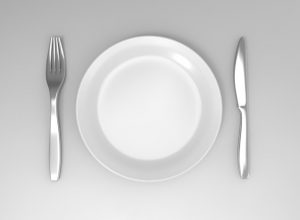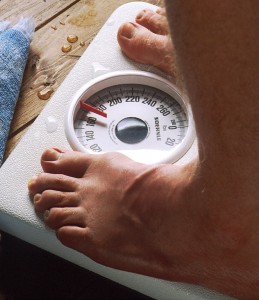Does The Design Of The Protein Supplement Matter?
Author: Dr. Stephen Chaney
 You’ve probably heard the saying, “It’s all downhill after 30”. That’s a particularly gloomy way of looking at it, but Father Time does take a toll on our body. I’m going to focus on age-related loss of muscle mass today, a physiological process called sarcopenia.
You’ve probably heard the saying, “It’s all downhill after 30”. That’s a particularly gloomy way of looking at it, but Father Time does take a toll on our body. I’m going to focus on age-related loss of muscle mass today, a physiological process called sarcopenia.
There are three factors that influence the rate at which we lose muscle mass as we age:
1) Our physiology changes. Our bodies break down our protein stores more rapidly and we have a harder time utilizing the protein in our diet to replenish those protein stores.
2) We become less active. In some cases, this reflects physical disabilities, but all too often it is because we are not giving weight-bearing exercises the proper priority in our busy lives.
3) Our diets become inadequate. The major driver of this phenomenon is loss of appetite which results in decreased caloric intake. However, physical disability, isolation, and insufficient income also contribute.
Sarcopenia in turn results in:
- Loss of muscle strength. Even the simple act of picking up a grandchild or a bag of groceries can become problematic.
- Increased risk of falls and fractures.
- Lower quality of life.
Obviously, sarcopenia is a major health issue for those of us in our golden years. If you are younger, it is a concern for your parents or grandparents. Sarcopenia is a health issue that affects everyone.
But what can be done to prevent sarcopenia? We can’t change our physiology, but we can change our activity level and our diet. Weight-bearing exercise tugs on our muscle fibers. That stimulates those fibers to incorporate protein into new muscle cells. It is no wonder that weight-bearing exercise is recommended for preventing sarcopenia.
What about diet? Are older adults getting enough protein in their diet to benefit from weight-bearing exercise? I have shared studies showing that older adults need more protein and higher levels of the amino acid leucine to benefit from their workouts.
But those studies were done with men. There have been no studies comparing younger and older women until now.
In this article, I discuss a recent study (CF McKenna et al, Journal of Applied Physiology, Feb 22, 2024 doi.org/10.1152/applphysiol.00886.2023) that asks how much protein is needed to stimulate muscle protein synthesis following a workout in post-menopausal women and compares it to the protein needs of younger women.
How Was The Study Done?
 The investigators enrolled 16 post-menopausal women who were part of a much larger study investigating exercise and nutritional regimens that preserve and/or enhance muscle mass in women.
The investigators enrolled 16 post-menopausal women who were part of a much larger study investigating exercise and nutritional regimens that preserve and/or enhance muscle mass in women.
The women in this study were on average 60 years old with a BMI of 26 (overweight). They had no heart disease, dietary restrictions, and did not take any supplements that could affect protein metabolism.
They were compared to a cohort of pre-menopausal women (average age = 24, BMI = 25 (borderline overweight)) recruited from the same large study. The experimental protocol was the same for the pre-menopausal and post-menopausal cohorts.
The study design was what is called a parallel-group design. Simply put, one leg was exercised using a leg extension machine, while the other leg was rested. The rested leg served as the control for each participant in the study.
Participants were tested ahead of time to determine the “one-repetition maximum” (1RM) weight for complete leg extension for each participant.
On the day of the experiment participants arrived in the laboratory after an overnight fast. One iv line was inserted, and a labeled amino acid was infused into the bloodstream, so the investigators could measure new protein synthesis at any time during the 4-hour experiment. Another iv line was inserted, so the investigators could withdraw blood samples.
At the beginning of the experiment, each participant was given either a whey protein drink (whey protein isolate fortified with vitamins C, B1, B2, B3, folate, B6, and B12 and minerals calcium, magnesium, iron, zinc, and potassium) or water. They then performed a bout of single-leg extensions starting with a warm-up of 2 sets of repetitions at 30% 1RM followed by 3 sets of 12 repetitions at 65% 1RM with 90 seconds of rest provided between sets.
Immediately following exercise, muscle biopsies were collected from both legs (t=0). Muscles biopsies were also collected at 120 and 240 minutes after exercise. Blood samples were collected continually during the experiment.
Muscle tissue was isolated from each biopsy, and something called myofibrillar protein synthesis (protein synthesis in muscle fibers) was determined based on the amount of labeled amino acid incorporated into muscle protein. The amount of protein synthesis due to exercise was determined by subtracting the incorporation of labeled amino acid in muscle fibers in the rested leg from that in the exercised leg.
What Is Leucine?
 Leucine is an essential amino acid. It is present in all dietary proteins, but it is more abundant in whey and soy protein than in some vegetable proteins.
Leucine is an essential amino acid. It is present in all dietary proteins, but it is more abundant in whey and soy protein than in some vegetable proteins.
Leucine is also one of three branched-chain amino acids (valine and isoleucine are the other two). If you are familiar with the weightlifting and body-building world, you will know that branched-chain amino acids are thought to be important for muscle gain. However:
- It turns out that leucine is the only branched chain amino acid that stimulates muscle protein synthesis (Am J Physiol Endocrinol Metab 291: E381-E387, 2006). And protein is what gives muscles their strength and their bulk.
- The other branched chain amino acids appear to play a supporting role in the quantities that occur naturally in most proteins. And adding extra valine and isoleucine to a protein supplement appears to reduce the effectiveness of leucine at stimulating muscle gain (Am J Physiol Endocrinol Metab 291: E381-E387, 2006).
What Have Previous Studies Shown?
 With respect the amount of protein needed to optimize muscle gain after workouts, previous studies have shown that:
With respect the amount of protein needed to optimize muscle gain after workouts, previous studies have shown that:
- The optimal protein intake for maximizing muscle gain post workout is 15-20 gm for young men (Katsanos et al, Am J Clin Nutr 82: 1065-1073, 2005; Moore et al, Am J Clin Nutr, 89: 161-168, 2009) and 20-25 gm for older men (Symons et al, Am J Clin Nutr 86: 451-456, 2007).
- More protein isn’t necessarily better. The effect of protein intake on post workout muscle gain maxes out at around 25 gm for young men and 30 gm for older men (Symons et al, J Am Diet Assoc 109: 1582-1586, 2009).
- Whey protein is the best choice for enhancing muscle gain immediately after a workout. Other protein sources (soy, casein, chicken) are better choices for sustaining muscle gain over the next few hours.
- A previous study by the authors of the present study showed that 15 gm of whey protein was sufficient to stimulate muscle protein synthesis in young women (average age 20). Thus, young women and young men both appear to benefit from 15 gm of protein after a workout.
How Much Protein Do Post-Menopausal Women Need?
 This is a complex study, so let’s just start with the big takeaway from the study:
This is a complex study, so let’s just start with the big takeaway from the study:
- The same whey protein supplement that increased muscle mass in younger women failed to stimulate “cumulative muscle protein synthesis” [net increase in muscle mass] in post-menopausal women. (This was measured by determining net accumulation of labeled amino acids into the muscle fibers of the exercised leg compared to the rested leg.)
With that out of the way, we can focus on some less important findings:
- There was a short-term (0-2h) transient increase in muscle protein synthesis following exercise with and without the whey protein supplement, but the result was not cumulative. In other words, the transient protein synthesis did not result in an increase in muscle mass.
- There was a long-term (2-4h) transient increase in muscle protein synthesis following exercise for the group taking the whey protein supplement, but, again, the result was not cumulative. It did not result in a net increase in muscle mass.
- In the group taking the whey protein supplement there was a transient increase in both insulin and leucine in the blood between 2 and 4 hours. Either or both could have driven the transient increase in protein synthesis observed during that same times.
In the words of the authors, “Ingestion of 15 gm whey protein failed to stimulate [net] myofibrillar (muscle) protein synthesis in post-menopausal women. While resistance exercise with and without feeding stimulate late (2-4 h) and early (0-2h) increases in myofibrillar protein synthesis, further exercise and nutritional manipulations may be necessary to robustly stimulate the skeletal muscle adaptive response to exercise.”
They went on to say that increased exercise intensity and/or increased protein intake may be necessary for post-menopausal women to maintain or increase muscle mass.
What Does This Study Mean For Post-Menopausal Women?
 I should start by acknowledging that this was a small study, as are most studies in this field of research. In part this reflects the expense of these experiments and the lack of major government support. But it also reflects the difficulty in recruiting subjects for this kind of experiment. They are hooked up to two iv’s for over four hours and have three muscle biopsies removed from each leg during that time. That’s a pretty invasive experimental protocol.
I should start by acknowledging that this was a small study, as are most studies in this field of research. In part this reflects the expense of these experiments and the lack of major government support. But it also reflects the difficulty in recruiting subjects for this kind of experiment. They are hooked up to two iv’s for over four hours and have three muscle biopsies removed from each leg during that time. That’s a pretty invasive experimental protocol.
With this limitation in mind, the biggest takeaway from this study is that post-menopausal women need more protein to build muscle mass than younger women. Young women, just like young men, can build muscle mass with as little as 15 gm of protein post-workout.
Unfortunately, this study did not determine how much protein post-menopausal women need to build muscle mass post-workout. And that is a critical question, because women typically have less muscle mass than men when sarcopenia starts to set in. Resistance (weight-bearing) exercise and adequate protein intake are key to preventing the debilitating effects of sarcopenia in post-menopausal women.
In their conclusion, the authors said that “…further exercise and nutritional manipulations may be necessary [to optimize the post-workout gain in muscle mass for post-menopausal women].”
From an exercise standpoint, the authors speculated that higher intensity exercise may be needed to increase muscle mass in post-menopausal women. However, the exercise protocol they used was based on public health recommendations for resistance training for older adults. A more rigorous exercise protocol might not be suitable for many post-menopausal women.
From a nutritional standpoint, they noted that a previous study had shown that 35 gm of protein post-workout was sufficient to build muscle mass in post-menopausal women. However, they considered 35 gm of protein to be a dangerously high intake for a single serving of protein for post-menopausal women. I concur.
In summary, we know that 15 gm of protein post-workout is too little for postmenopausal women, and while 35 gm of protein is sufficient, it is probably too much. Until further studies are performed in post-menopausal women, I would recommend the 20-25 gm of protein shown to support post-workout muscle gain in older men.
But it is not just the amount of protein that is important. The design of the protein supplement also matters.
Does The Design Of The Protein Supplement Matter?
 While the amount of protein in a post-workout supplement is important, the design of the protein supplement also matters. While there are lots of crazy claims on the internet, there are two natural ways to maximize the effect of a protein supplement on muscle mass. Insulin and the amino acid leucine both drive muscle protein synthesis and help maximize post-workout muscle gain.
While the amount of protein in a post-workout supplement is important, the design of the protein supplement also matters. While there are lots of crazy claims on the internet, there are two natural ways to maximize the effect of a protein supplement on muscle mass. Insulin and the amino acid leucine both drive muscle protein synthesis and help maximize post-workout muscle gain.
- Recent research has shown that 2-3 gm of leucine (2 gm for young men; 3 gm for older men) is sufficient to maximize post workout muscle gain if protein levels are adequate (Am J Physiol Endocrinol Metab 291: E381-E387, 2006). We don’t know the corresponding leucine requirements for women, so we will need to assume they are similar.
-
- A 15-gram serving of whey protein isolate only provides 1.4 gm of leucine, far below what is likely to be needed to drive post-workout muscle gain in post-menopausal women.
-
- If you are a man over 50 or a post-menopausal woman, you should look for a post-workout protein supplement containing added leucine. And even younger adults will get “more bang for your buck” by choosing protein supplements with added leucine.
- The insulin response is maximized when the carbohydrate to protein ratio is around 2.5 to 1. The manuscript did not list carbohydrates among the ingredients used in the whey protein supplement used in this study. But if it is like many whey protein supplements nowadays, it probably contained little or no carbohydrate.
-
- Although less popular in today’s low carbohydrate world, post-workout supplements with a high carbohydrate to protein ratio are also effective in maximizing post-workout muscle gain.
The Bottom Line
Sarcopenia (age-related muscle loss) is a major concern for older Americans. Sarcopenia can result in:
- Loss of muscle strength. Even the simple act of picking up a grandchild or a bag of groceries can become problematic.
- Increased risk of falls and fractures.
- Lower quality of life.
Sarcopenia can be prevented by a combination of resistance exercise and adequate amounts of protein following the workout.
We know that older men require more protein than young men in a post-workout supplement designed to help them maximize the muscle gain associated with resistance exercise. But similar experiments had not been performed with women until now.
In the article above I share a study that shows that post-menopausal women need more protein than young women in a post-workout supplement. But the study did not determine how much protein they need.
I also discuss the amount of protein post-menopausal women likely need in a post-workout supplement, and how that protein supplement could be designed to maximize muscle gain and prevent sarcopenia.
For more information on this study and my recommendations read the article above.
These statements have not been evaluated by the Food and Drug Administration. This information is not intended to diagnose, treat, cure or prevent any disease.
______________________________________________________________________________
My posts and “Health Tips From the Professor” articles carefully avoid claims about any brand of supplement or manufacturer of supplements. However, I am often asked by representatives of supplement companies if they can share them with their customers.
My answer is, “Yes, as long as you share only the article without any additions or alterations. In particular, you should avoid adding any mention of your company or your company’s products. If you were to do that, you could be making what the FTC and FDA consider a “misleading health claim” that could result in legal action against you and the company you represent.
For more detail about FTC regulations for health claims, see this link.
https://www.ftc.gov/business-guidance/resources/health-products-compliance-guidance
_______________________________________________________________________
About The Author
 Dr. Chaney has a BS in Chemistry from Duke University and a PhD in Biochemistry from UCLA. He is Professor Emeritus from the University of North Carolina where he taught biochemistry and nutrition to medical and dental students for 40 years. Dr. Chaney won numerous teaching awards at UNC, including the Academy of Educators “Excellence in Teaching Lifetime Achievement Award”.
Dr. Chaney has a BS in Chemistry from Duke University and a PhD in Biochemistry from UCLA. He is Professor Emeritus from the University of North Carolina where he taught biochemistry and nutrition to medical and dental students for 40 years. Dr. Chaney won numerous teaching awards at UNC, including the Academy of Educators “Excellence in Teaching Lifetime Achievement Award”.
Dr Chaney also ran an active cancer research program at UNC and published over 100 scientific articles and reviews in peer-reviewed scientific journals. In addition, he authored two chapters on nutrition in one of the leading biochemistry text books for medical students.
Since retiring from the University of North Carolina, he has been writing a weekly health blog called “Health Tips From the Professor”. He has also written two best-selling books, “Slaying the Food Myths” and “Slaying the Supplement Myths”. And most recently he has created an online lifestyle change course, “Create Your Personal Health Zone”. For more information visit https://chaneyhealth.com.
For the past 45 years Dr. Chaney and his wife Suzanne have been helping people improve their health holistically through a combination of good diet, exercise, weight control and appropriate supplementation.














